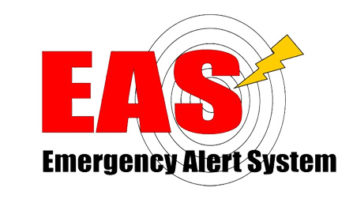SAN FRANCISCO ��Just as the Rolling Stones jumped in with �Start Me Up,� they were stopped. And that was just as it should be.
Wednesday�s nationwide test of the Emergency Alert System may have stopped Mick from promising that he�ll never stop as he sang on satellite radio, but comments continue to roll in from all quarters of the nation � from both radio and television broadcasters � that the EAS IPAWS test seems to have widely met its goal, though there are a fair number of stations who have experienced some issues.
On Thursday, the Federal Communications Commission reported that it had heard from more than 22,000 stations following the Sept. 28 test. The test itself seems to have come through in most cases clearly and audibly.
For example, in a sample of stations from Nebraska, Mississippi, Texas and Maryland, engineers reported that the national IPAWS EAS test came through correctly and on-time. Several broadcasters were frankly surprised that the test came through so smoothly.
�Much to my amazement, it worked well,� said Chuck Conrad, station owner of KZQX(FM) KDOK(AM) and KEBE(AM) in Texas. �The test went as scheduled and sounded very good.�
Conrad was one broadcaster who said that that the reporting process via the FCC�s new ETRS database went off without a hitch for him, despite the thousands of station personnel that were expected to log on to the site near-simultaneously. �Reporting only took a couple of minutes,� Conrad said. �I was expecting a log jam, but it didn’t happen.� Other TV stations reported the same, with a station in The Dalles, Ore., receiving the test reporting success�logging into ETRS about 15 minutes after the test, and successfully submitting both Forms Two and Three.
Not everyone had smooth sailing however. Others ran into hurdles both with the test itself and with the database.
The broadcaster Three Angels Broadcasting Network, a radio and television network based in Illinois, had trouble with the software on its EAS device. �It said it forwarded the test, but didn’t really do it,� he said. �We had to reboot the box before it would forward properly.�
Hall Communications, which owns 21 radio stations in the East, ran into a couple of roadblocks. Edd Monskie, vice president of engineering, said that the test came through, but in one case the test was forwarded in from two radio stations simultaneously, and the EAS device was not able to handle both at once. �One was logged, the other was lost, but we confirmed that both were sent,� he said.
Monskie said that the registration process within ETRS �failed miserably.�
�It had problems just like the Form One creation,� he said. �The batch file uploading was not working at all from 2:20 p.m. up through 8 p.m., when I finally finished submitting all of the Form Two information, individually station by station.�
And even that ran slowly at times, Monskie said. �Some submissions had to be done two and three times before it was successful. Hopefully the batch file uploading system will be working before the deadline for Form Three!� Monskie, for one, said the failure of the submission system was not a surprise.
Several engineers said the difficulties were somewhat expected since, after all, this was only a test.
Dick Lamberson with WDBW(LP) in Port St. Joe, Fla., said his station wasn�t able to participate in the test because his EAS unit went kaput two days before, possibly because of lightning damage. �Another station in Florida reported that only alert tones came through and not the audio, also possibly due to a lightning storm. Others, including several low-power radio stations, reported problems receiving the code at all, which was possibly be due to software that hadn�t yet been updated.
There have also been some reports of tests that didn�t go off at all.
It has been reported that station KIRO-TV in Seattle did not see the test come through one of its two EAS units. It was also reported that several television stations in Los Angeles did not broadcast video crawls of the test.�Several sources said that�KTLA, KTTV, KVME and CNN in the Los Angeles area did not air the EAS alert. TV Technology has reached out to the stations for comments.
A version of this article originally appeared on the website of Radio World, sister publication of Radio magazine.
�
�











